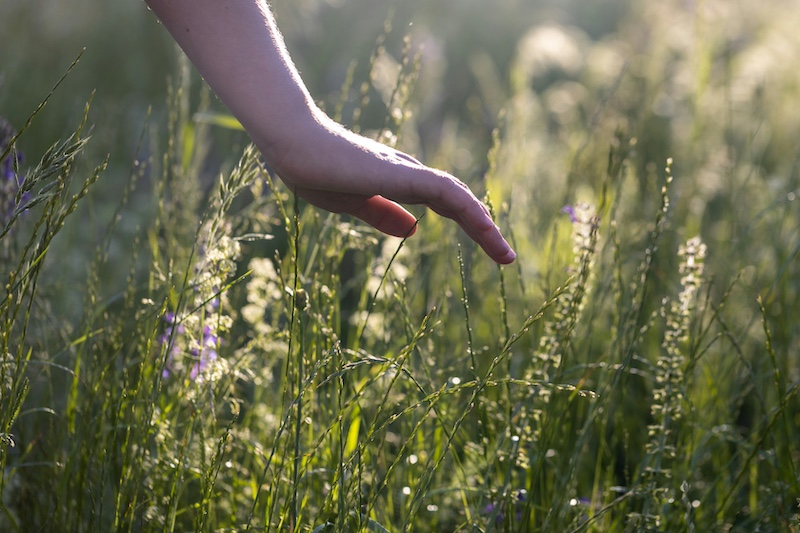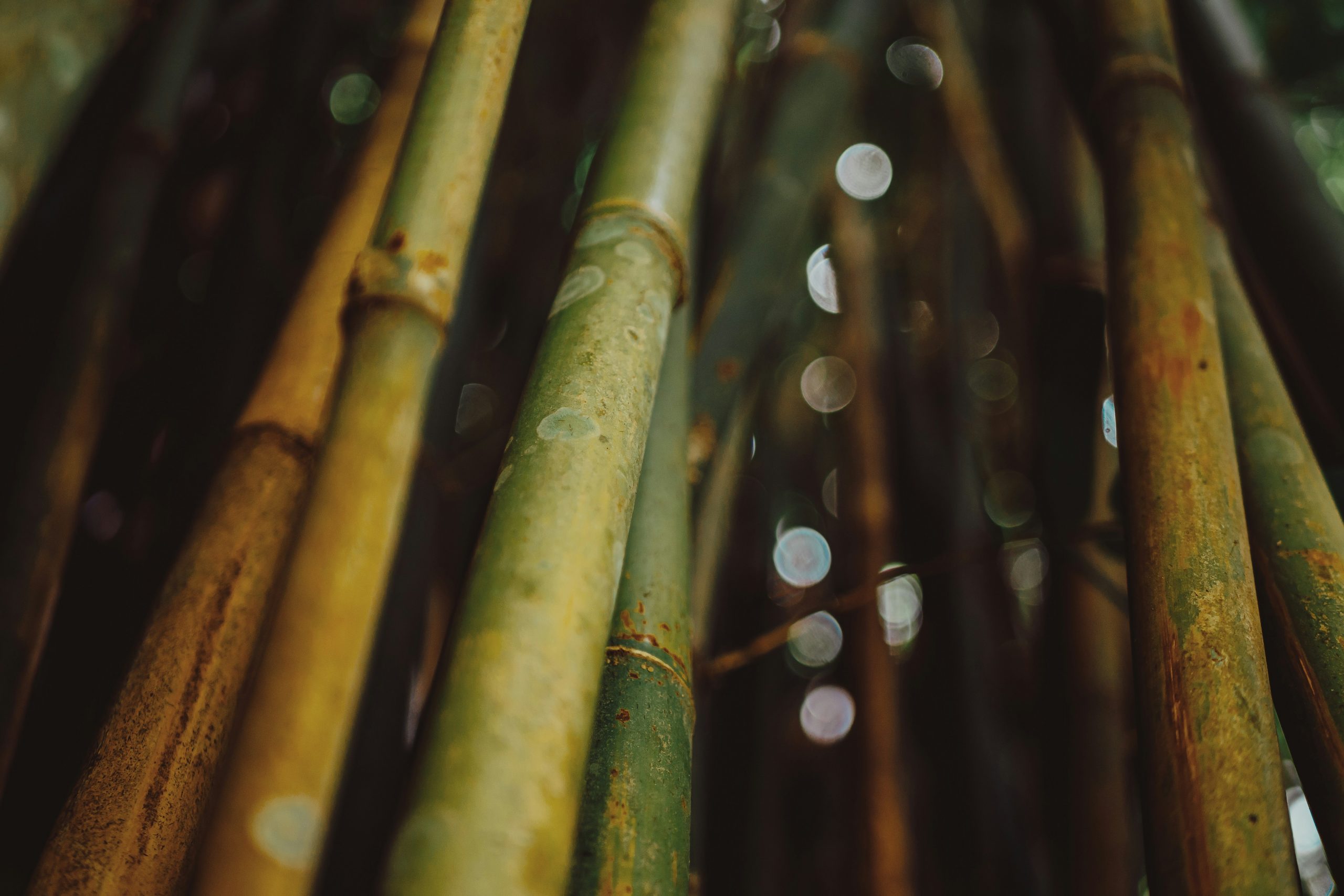Connecting With the Root of Our Being
A practice of bringing awareness to our senses and seeing through the illusion of isolation The post Connecting With the Root of Our Being appeared first on Tricycle: The Buddhist Review.

Most of our evolutionary history hasn’t been one of felt isolation but rather, one of immersion and integration: we’ve been able to see, smell, and hear directly with our senses what’s good for us and where potential dangers lie. However, given the modern complexity of our lives, immersed as we are by various means and media in a sea of thousands of people, we are brought to the limit of what we can understand through our senses alone. On a planet with more than eight billion people who have unprecedented freedom of movement and communication—not to mention the now permanent and growing multitude of refugees created by factors including the worsening climate crisis—it’s no wonder we sometimes feel lost and even unsure of who we are or which community we belong to.
Yet our human, creaturely senses remain very much a part of our bodies and our lives. Coming back to our breathing and sensing nature within and around us—the air that becomes breath in our bodies, the plants with which we build our cells, the water we drink and release—helps us to better understand the root of our emotions and often mistaken perceptions in what can otherwise be a busy, overwhelming existence. This contact helps us understand the root of our being. It reminds us that, despite how hectic modern life can be, we remain embedded in the natural world of which we’re made.
Though feelings of isolation can compound our suffering and sense of being overwhelmed or inadequate, the bedrock truth is that we are not separate. The separation we feel in our daily lives is artificial, a construct of our minds. No matter how shiny, sexy, and powerful our cars may be or how comfortable or magnificent our houses or apartments, we continue to breathe air circulated by trees, to drink water as it moves through its endless natural cycle, and to eat food grown with the help of sun and soil.
Coming back to these realities can be deeply healing. Awareness of our cellular connection to everything around us can be a sword that cuts through the illusion of our felt isolation. When we practice hiking Zen and pay attention to our bodies and our senses from the inside out, we can take refuge in the stability of the earth’s capacity to sustain us. When we walk, we can enjoy the contact—the bodily sensation—between our feet and the earth. We can stand still and be aware of what we see, sensing the beauty around us. We can focus on listening—there may be a creek, birds singing, or the sound of our own breathing. As we come back to our senses in the present moment with the support of the ground beneath our feet, the narratives in our heads—stories of our pain from the past, anxiety in the present, or fears for the future—can dissolve.
The healing of the earth is only possible when we heal ourselves.
When there’s a storm, we look right away for somewhere to take refuge from the elements. The same is true when the storm is within us, the storm of our fear, anxiety, or depression. We can find refuge, not by running away from our suffering but by learning to turn toward it, to embrace and transform it. When we practice being there for Mother Earth with all our awakened senses, we see we’re not separate from the earth; this connection can also be our refuge.
It is not enough to have deep insight; true insight naturally leads to action. Engaged Buddhism means we don’t just study Zen teachings as a philosophy; we apply them right away in our daily lives—individually, as communities, and in our work as activists and agents of transformation in the world. We act, with our bodies, our speech, and our thoughts, all of which are interconnected. Skillful action comes out of love, a love we feel for all species—including the human species—and our planet. It does not come from despair. Love is insight, love is understanding. This is the fertile soil in which our actions want to grow.
When we see clearcut forests, mines like open wounds facing the sky, and kilometers of plastic trash floating in the ocean, we know we haven’t yet learned—or we’ve forgotten—to take refuge in Mother Earth. We’re not as small and insignificant as we may think; we’re an integral part of one great planet. Our stability and capacity for transformation and healing are beyond comprehension. When we touch this reality, our deep roots in the planet come alive—the roots we share with our spiritual, blood, and land ancestors. We’re not just an individual drop of water; we’re a whole river.
Healing begins when we see the harm our species has done to the earth and touch the seed of compassion within ourselves instead of falling into despair and anger. Our pride, our ambition, and our desires have led us to the current planetary crisis. With our senses alive and the insight that we and the earth are literally one, we recognize that our healing and transformation are only possible alongside the healing and transformation of all beings and of the planet itself. Our practice takes on urgency when we realize that the converse is also true: the healing of the earth is only possible when we heal ourselves.
Practice: Opening Our Senses
Look for a quiet place outside—it could be at the foot of a tree, in an open field, leaning against a rock in the desert, at a park, or anywhere else available to you. You may like to take a moment, in whatever way feels best, to ask permission to sit, acknowledging the presence of your surroundings—Zen monks and nuns often do this with a heartfelt bow. If we like, we can ring a small bell at the beginning of our practice to help us focus on listening and settle into the moment.
We sit comfortably upright. It is easiest to do this if there is a little bit of a slope so we can cross our legs with our knees lower than our hips. If you can’t find a slope, you can sit on your shoes or your coat to make it easier to sit upright. This posture helps us maintain attention and feel alive in our practice. If you get tired, you can lean against a tree or anything else nearby, allowing your body to relax and feel energized by the vitality of the forest or landscape around you. Then, engage in this practice:
Be aware of your posture and body, upright but relaxed. Relax your eyes, keeping a soft gaze gently focused on the earth in front of you. You can also close your eyes. Become aware of the smells and sounds around you. Become aware of your in- and out- breath. The breath can serve as an anchor in meditation, helping you to focus on the present moment. You can cultivate this awareness by repeating the following words to yourself, coordinating them with your breath:
Breathing in, I know I am breathing in. Breathing out, I know I am breathing out.
In / Out.
Continue matching verbal cues with your breath to help your attention settle and your senses come alive:
Breathing in, I am aware of my skin. Breathing out, I am aware of the contact my skin makes with the soil, the air, and my clothing.
Aware of skin / Contact with soil, air, clothing.
Breathing in, I am aware of my nose and the wonderful fragrances in nature: the smell of earth, the fresh air after rain. Breathing out, I smile to the wondrous scents of the natural world.
Aware of smells / Smiling to smells.
Breathing in, I am aware of the taste in my mouth. Breathing out, I smile to taste sensations.
Aware of taste / Smiling to taste.
Breathing in, I am aware of sound: the song of birds, the babbling of a brook, the wind rustling leaves. Breathing out, I smile to the wondrous sounds of life.
Aware of sounds / Smiling to sounds.
Breathing in, I am aware of the millions of colors I see with my eyes. Breathing out, I smile to the brilliant colors of nature.
Aware of color / Smiling to nature’s beauty.
Breathing in, I’m aware of my thoughts. Breathing out, I smile to my mind.
Aware of thoughts / Smiling to mind.
You may like to follow all these steps or to practice with two or three senses at a time. Practicing like this in the natural world, we’re closer to the stimuli our senses have evolved to receive. Slowly moving through an awareness of each sense helps us understand how stimuli affect our mood and are a kind of “food.” Until we develop the habit of recognizing how we feed ourselves through our senses, we can’t understand how our emotions arise. The solidity we develop in such outdoor practices can leave us better prepared to cope with and understand our sensory stimuli in more artificial, constructed environments. We can be aware that many generations have found support in practicing this way—outside, interwoven with nature. We’re part of nature, and we’re connected to the earth, to the trees, the air, and all other beings. Please don’t take our word for it—see for yourself if this is true.
◆

From Hiking Zen © 2025 by Brother Phap Xa and Brother Phap Luu, courtesy of Plum Village Community of Engaged Buddhism, Inc., with permission of Parallax Press, parallax.org.

 Astrong
Astrong 
































